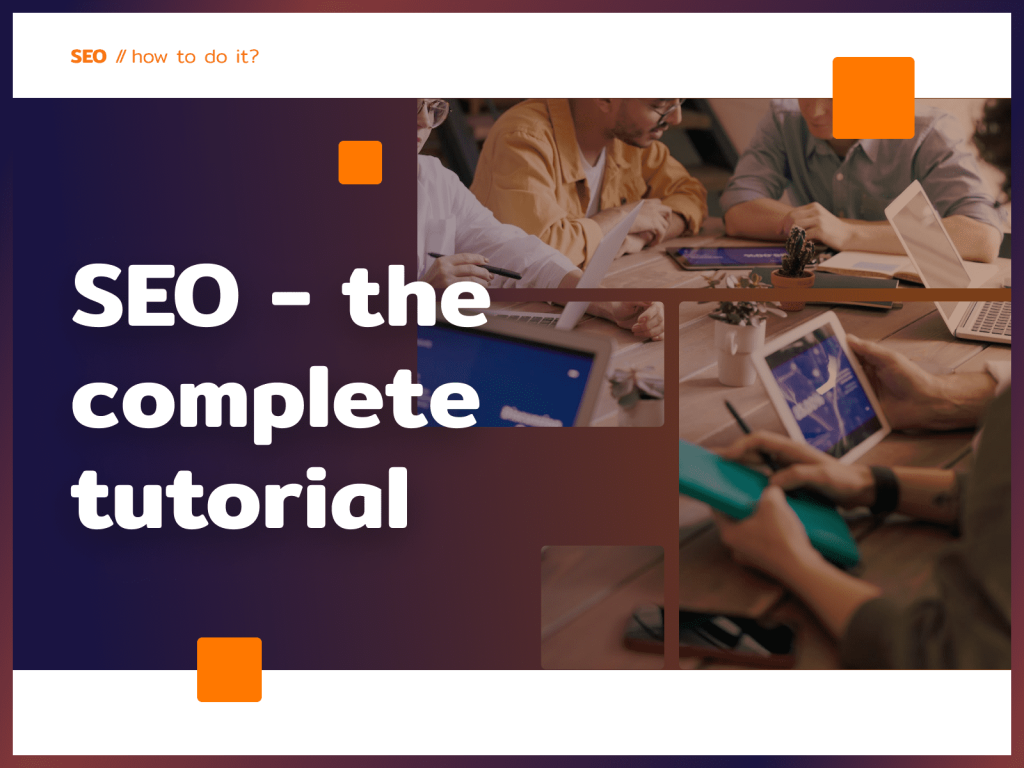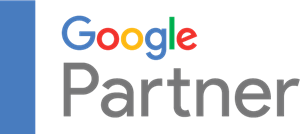Positioning can be learned on your own, but it is worth knowing at least where to start. You can learn by trial and error, but be prepared that it may take time. Beginners also happen to “burn” a domain – bad SEO practices, e.g. aggressive link building, make such a domain no longer worth “saving” and it is better to buy another one – which involves a name change and costs. Want to save time and money? See my guide – I hint at what SEO is and how to position websites.
What is positioning?
When you type mechanic Bydgoszcz into a search engine, you expect to see pages of establishments in a specific area. For Google to return relevant search results, it needs to know the content of the sites. That’s why Google’s robots roam the sites, index their content and evaluate them according to algorithms that change quite often. Based on this, the search engine selects the appropriate results for a specific query. The more your site is aligned with the algorithms, the higher it will rank, and therefore more users will enter it. After all, supposedly the best hiding place is the second page of Google search results. But do you necessarily have to take the first positions to sell? How to position websites to have results and at the same time not SPAM? I will show you step by step.
SEO, or what? On-site and off-site
Positioning is not only about your website, but also about the links that lead to it. So I always recommend dividing the budget between on-site and off-site activities – their combination makes the site gain authority in the “eyes” of Google.
On-site SEO is:
- Content optimization – keyword saturation, proper headline hierarchy, writing/developing unique category and product descriptions, offer pages,
- Site structure – logical menus, bread crumps, internal linking,
- Technical optimization – friendly URLs, responsiveness, meta tags, alt attributes for graphics,
- UX – fast loading, intuitive template, high-quality photos.
In addition to this, it is worth building a link profile, that is, remember off-site SEO. I will show you how to position step by step.
Keyword selection
Before you choose your keywords, it’s a good idea to determine what your goal is – more sales, growing brand awareness, establishing yourself as an expert in your industry, etc. So do you always have to aim for the first position? Not necessarily! Let’s say you sell coffee makers. When such a phrase is typed into a search engine, not counting paid results, large, well-known companies appear in the first positions:
If you run a small online store, it will be difficult for you to compete with such brands. That’s why, instead of betting on such generic (generic) phrases, such as coffee makers, it’s better to opt, for example, for so-called ” coffee makers“. Long tail phrases because they are less competitive. For the phrase good coffee maker with grinder, even lesser-known stores are already in high positions:
I’ll show you how to choose phrases to sell more, even if your brand is still little known.
How to choose keywords?
With SEO, the guide wouldn’t be complete without tips on how to choose keywords and how to position a site. Here it’s better not to rely on a hunch, but on data – it’s worth supporting with tools such as Senuto, Ahrefs and Google Search Console.
Here you can check what keywords the page is visible for, the position of the phrase and how many times it is searched. This makes it easier to choose the best keywords that match specific products and services, and at the same time – they are searched by enough users to make it profitable to position for them.
Senuto
The plus side of SEO tools is that they are intuitive – you just have to click through them to discover how they work. The screenshot shows the most important columns to look at: the average number of searches, the change in position yesterday-today, the phrases the site is displaying for, the estimated site traffic, and the history of the phrase’s position. In Senuto, you can also check how many phrases in the TOP 3, TOP 10 and TOP 50 your site is displaying:
Ahrefs
In Ahrefs, it is worth paying attention primarily to:
- Volume – the estimated number of searches over the past month,
- Traffic – estimated traffic to the site for a given phrase,
- Position – simply the current position of the page.
However, the tool is quite accurate, so you can also find other data here.
In addition to the basics, it’s worth checking out:
- DR – the strength of a site’s links compared to other sites in the Ahrefs database, the results are presented on a 100-point scale.
- UR – the strength of the link profile leading to your site, the score is also presented on a 100-point scale.
- Backlinks – the number of links directing from other sites to your site.
- Referring domains – the number of domains directing to your site.
- Keywords – the number of keywords for which the site ranks in the TOP 100 search results. It happens that the page is displayed in several countries (“All countries” mode) – then the phrase is still counted as one keyword.
- Traffic – the estimated number of monthly visits to the site from free (organic search results).
In addition, you can check referring domains, organic and paid traffic.
Google Search Console
GSC comes in handy to see what phrases a site is visible for. You can also analyze the number of keywords the site is ranking for, how this translates into clicks and what the position of the phrase is. You can find this data when you select Effectiveness in the side menu.
Types of keywords
Keyword to keyword unequal. When selecting phrases, it is not enough to be guided only by the number of searches. Some keywords are more competitive than others, not every phrase is a sales one. In the simplest terms, keywords can be divided into several groups:
- Generic (generic) – consist of one or two words (e.g., pins), competition for them is high, and in addition, it is not known what specifically the person who types such a query into the search engine is looking for.
- Long-tail – consists of several words (e.g. red lacquered stilettos), so they are less competitive, and traffic from them is very valuable, because the user knows what he is looking for.
- Branded – such keywords contain the name of the company, manufacturer or product (e.g. Louboutin red stilettos), are also valuable because the person typing the query into the search engine knows what he is specifically looking for.
- Regional – contain the name of the city or province (e.g. Google Ads Bydgoszcz campaigns), so they are used in local positioning.
- User questions or problems – it is very common to write blog articles under such phrases, because they answer the questions of potential customers and bring traffic to the site (for example, what dance shoes for a wedding?).
It is difficult for a fledgling entrepreneur to compete with large companies with sizable budgets. It’s better to measure your strengths and choose long tail keywords instead of generic phrases. The SEMStorm tool will be helpful here, as it allows you to compare several domains in terms of search keywords (and their positions). In this way, you can select phrases that your competitors are not positioning for, but have a lot of searches per month:
Gotowy na rozwój?
On-site SEO
Positioning should start by looking at the site – it should not only meet Google’s requirements, but also encourage the user to buy.
Content optimization
It’s worth starting with the meta tags, first of all meta title For each subpage. The meta title should be approx. 70 characters with spaces. It is a good idea to include the phrase and the company/blog name.
Also remember meta description – The meta description should have a maximum of 160 characters with spaces. It is best to include phrases and call to action. The meta description does not have a direct impact on SEO, but if it is well-written, it encourages users to click on the link. Higher CTR as much as possible is already a ranking factor. Meta description is increasingly important because it is more visible in search results on mobile devices, which a very large proportion of users use.
The next step is to set the appropriate header hierarchy. There should be only one H1 header on each subpage (<h1>). It is the most important, so it is placed at the top of the page, and it should also contain the phrases being positioned.
We always place subsequent headings in a hierarchical manner, that is:
,
,
,
,
,
etc.
The other headings (except H1) may appear many times on the page, but in practice, headings lower than H3 are usually not used.
To have somewhere to put the headlines, of course, you have to write the content. Each sub-page should have text saturated with keywords. Saturated, but not over-saturated – there are no rigidly set rules here, but it is better to naturally place a phrase 2-3 times in the content than to forcefully insert it in every other sentence. Too many keywords can make Google consider the text as SPAM. As for the length of the text, here too there is no golden mean.
Some SEO copywriting tools, such as Surfer SEO or Content Writer from Senuto, recommend texts as long as tens of thousands of characters. This is because competitors artificially pump up the amount of content on the page by inserting unsightly and uninteresting blocks of text. It is better to use common sense – the text should, above all, be of high quality, without unnecessary pouring of water. It is best to divide it into paragraphs and insert H2 headings. If possible, it’s a good idea to include phrases in your headlines, but again – it should sound natural.
Site structure
To learn how to position pages it is useful to have at least basic technical knowledge, for example, the ability to edit menus. Above all, it should be logical and transparent.
A person who is looking for local positioning can easily find what they are interested in. The menu is clearly divided: Our Services > Web Positioning > Local Positioning > Local Positioning Gdansk. Such a division is thought out primarily in terms of local SEO: sub-pages are positioned for regional phrases, so it will be easier to target customers from a specific city. For the same reason, keywords appear in the names of the bookmarks.
Internal linking
Internal links are worth placing primarily in blog posts. Keywords should act as anchors, i.e. links to the positioned pages, products and categories.
On parent pages (e.g. home page, category sub-page), you can also create small boxes linking to sub-pages (e.g. local sub-pages):
Why take care of internal linking?
Internal links primarily increase the time a user spends on the site. If he’s interested in a blog post, there’s a better chance he’ll click on the links to see related products and services.
Why does it pay to spend time on internal linking? Internal links first and foremost:
- increase the quality of the indexed page (PageRank algorithm),
- make it easier for users to navigate the site,
- make it easier for Google’s robots to index subpages,
- reduce the bounce rate, or the percentage of sessions in which users visited only one subpage,
- inform about the topic of the page – Google’s robots find out more quickly what your page is about, which improves indexing results,
- prevent cannibalization, which is the phenomenon when more than one subpage is positioned for a given keyword and visibility problems arise for that phrase,
- maximize SEO effects.
How to avoid mistakes in internal positioning?
Links are worth placing not only in blog posts, but also in several key places on the site.
Main menu
Clickable menus are just the links! To make the menu work, you need to include links to specific subpages. Keywords work best here as anchors. Menus are a must especially on sites with many categories such as online stores.
Side menu
Menus can also be placed in the side panel – a way to increase the number of internal links on the site. Such menus engage the user and make it easier for him to move around the site.
Site Content
Links are usually just placed in blog posts, but they can also be found in other texts, such as on offer pages or in category descriptions. It’s great if they are clearly visible – it’s best to highlight them with a different color or underline.
Footer
The footer is another place where it’s always a good idea to include links. Users are so used to it that they intuitively look there for contact information and other information, e.g. about your company, delivery, payment, etc.
Navigation
It’s a good idea to include so-called breadcrumps in the navigation. crumbs. They make it easier to move around the site because they show you where you are on the page.
With internal linking, it’s easy to make mistakes, through which links harm instead of help. I recommend remembering, first of all, that:
- The fewer links on a page, the more value they have,
- The higher up the link is on the page, the more value it has,
- Don’t repeat the same links over and over again – it’s a good idea to create a file where you write down what links you publish and when.
Technical optimization
You don’t need to be able to put up a site from scratch, but technical knowledge in SEO definitely comes in handy. Above all, it is worth taking care of friendly URLs and page loading speed.
Friendly URLs
When it comes to technical issues, the easiest thing to do is to set up friendly URLs – friendly meaning, above all, simple. It is also good if the URL includes a keyword and a “way” to the subpage:
Page loading speed (pagespeed)
Secondly, it is worth taking care of the page loading speed. It is not the most important, but it can have quite an impact on SEO results. Users tend to be impatient, so if a page loads slowly, a large portion of them will immediately lose the desire to browse it. Loading speed can also affect a site’s indexation and rejection rate.
What specifically affects pagespeed?
Server response time – Time to First Byte
This is the time from sending a request (e.g., clicking on a Google search result) to receiving the first byte of your site’s data. Time to First Byte allows you to see how fast and efficient your connection to the server is.
Time to fully load HTML code
The issue here is the loading speed of the page – only the “skeleton” without the visual part (such as CSS styles). Time is primarily dependent on the complexity and correctness of the site’s code.
Time of appearance of the first content – First Contentful Paint
It shows how long a user has to wait to see anything on the site.
Speed of the largest element on the page – Largest Contentful Paint
This is the time from when the page starts loading until the user sees its largest element, such as a slider. Ideally, even the heaviest item should not take longer than 2 seconds to load.
Visual stability – Cumulative Layout Shift
When a website loads, its elements initially move before the intended look of the site appears. The shorter this time is, the better – ideally, if it is hundredths of a second.
Response time to first interaction – First Input Delay (FID).
This is the time that must elapse from the appearance of the page interface to its full interactivity, i.e. when buttons become clickable, etc.
Many sites have elements that unnecessarily slow down their loading. Errors on the part of the developers involved in putting up the site are also a common problem. Slow page loading usually causes:
- large, uncompressed graphics,
- numerous scripts that need to be loaded,
- unnecessary plug-ins,
- code errors,
- No asynchronous loading of various elements (the entire page must load simultaneously).
To know if your site is loading fast enough, you might want to go to: https://pagespeed.web.dev/ and enter your site address. The results are accurate and clear: you get a color (green, orange, red) and a specific number on the scale.
The results are measured separately for mobile devices:
and stationary devices:
If the site is not sufficiently adapted to mobile devices, the results will vary significantly as in the example above.
What if the speed is “orange” or “red”? On the same page you will find tips on what to do to speed up loading.
Sample guidelines for mobile devices:
and stationary devices:
You’ll find information on how much each component slows down loading, so you’ll know right away what’s most worth improving.
Mobile friendly website
If we are already talking about loading speed on mobile devices, it is impossible not to mention responsiveness, that is, the adaptation of the site to devices with different resolutions. To see if your site is mobile friendly, it’s a good idea to do a mobile optimization test .
If you find that your site is not customized, it’s worth making sure you’re not making some basic mistakes in creating a mobile-friendly site:
- Do away with pop-ups,
- Do not use flash (moving elements on the page, e.g., videos, animations),
- Create a better organized menu.
ALT attributes
On the surface, these are obvious, but many people still forget about them. It is worth remembering that the robots are responsible for SEO. How do you learn to insert graphics in a way they can understand? First of all, it is worth remembering ALT attributes, or descriptions, which tell robots what a particular image represents. ALT attributes added on a particular subpage should be unique. You can include keywords, as long as the phrase specifies what is depicted in the image. A correctly completed ALT looks like this:
<img src=”image address” alt=”insert name here”>
I’ll show you how to simply add ALT attributes in WordPress.
From the side menu, choose Media > Add New and upload the graphic you want to add to the page.
Then select the image you are interested in from the gallery and complete the ALT:
Off-site SEO
Optimizing your site is one thing, but you should also remember to build your link profile. The most important thing is patience – SPAMming with links hasn’t worked for a long time, so it’s better to gradually publish links on quality sites. See how off-site SEO can effectively increase a site’s visibility.
Link building
We’ll start with the basics, which is what a link is. It’s simply a hyperlink in the text that links to a destination (another page, a subpage of the same site, etc.). In the site code, the link is written as: <ahref=“www.twojadomena.pl”>Anchor</a>.
Anchor is the phrase under which we place the link. This makes the link in the text look like this: Google Ads campaigns, not like this – https://zielinskijerzy.com/google-ads/.
We can divide links into two types:
- Internal – linking to subpages within a domain (one site),
- External – linking to another site.
It is also worth remembering that links have attributes. They are assigned to a link, and thus Google’s robots know how to treat a particular link – whether to follow it or not. Links have two types of attributes:
- Dofollow – the link conveys power to the site,
- Nofollow – the link does not increase the value of the page.
In the code, the links look like this:
<a href=“www.twojadomena.pl”rel=”dofollow”>Anchor</a>
<a href=“www.twojadomena.pl”rel=”nofollow”>Anchor</a>
Links can also be divided by anchor type. In this regard, we distinguish two types of links:
- Brand – links where the anchor is the company/brand name,
- EML – links where the anchor is a keyword.
How to get links?
Link building methods vary depending on what quality of links you care about. Of course, it is better to bet on high-quality ones, as they cost more, but they also increase the power of the domain more effectively.
Links can be acquired in various ways:
Lower quality links
You can acquire such links in blog posts and comments under them, on advertisement pages or forum posts.
Higher quality links
Links sourced from posts published on high-quality blogs. You can put up to 2 links in one article. You can find blogs where you can buy posts and links from services such as WhitePress. The best choice, of course, is to choose quality services, but how do you evaluate this? It is best to analyze such domain parameters as Domain rating, Trust Flow and generated traffic. Placing links on sites with poor results can be counterproductive. To check the performance of the sites, it is worth using Ahrefs, or possibly Senuto.
From trading to positioning
Whether you’re going to handle SEO or use an SEO agency, it’s helpful to know what it’s like from the first conversation, to estimating results, to starting SEO.
Depending on what ceiling you start from, the scope of services, and therefore the price of SEO, can vary greatly. The most important are:
- Having a website,
- Phrase selection,
- Estimation of traffic and positioning effects,
- Site optimization,
- Link building,
- Regularly maintained company blog.
What is traffic estimation in SEO?
SEO requires the ability to predict, and the ability to estimate results requires experience above all else. Estimation allows you to determine the approximate value (of traffic and conversions) based on data from tools such as Senuto or SurferSEO. With this, you can more or less predict how much positioning will increase traffic to your site.
When estimating, it is best to analyze where the traffic is coming from: which phrases and subpages are generating the most hits to the site. You can check the estimated traffic in Senuto:
Or in Ahrefs:
It is worth using more than one tool, as the data can vary quite a bit.
SurferSEO
For estimation, SurferSEO, a tool used to create texts for SEO, also works well. It’s worth using them primarily to analyze how a site performs in terms of content and phrase saturation against competitors.
The screengrab shows how the site compares to its competitors on a scale of 1 to 100.
Based on this data, it is possible to predict more or less how much work will be needed to at least partially match the competition. If the domain is quite fresh and the company is starting out in the industry, you know that you will have to wait longer for results.
To learn how to position sites you need to first of all try. In this guide, I have compiled the most important rules so that you are already one step ahead – avoiding many of the mistakes made by beginners.


















